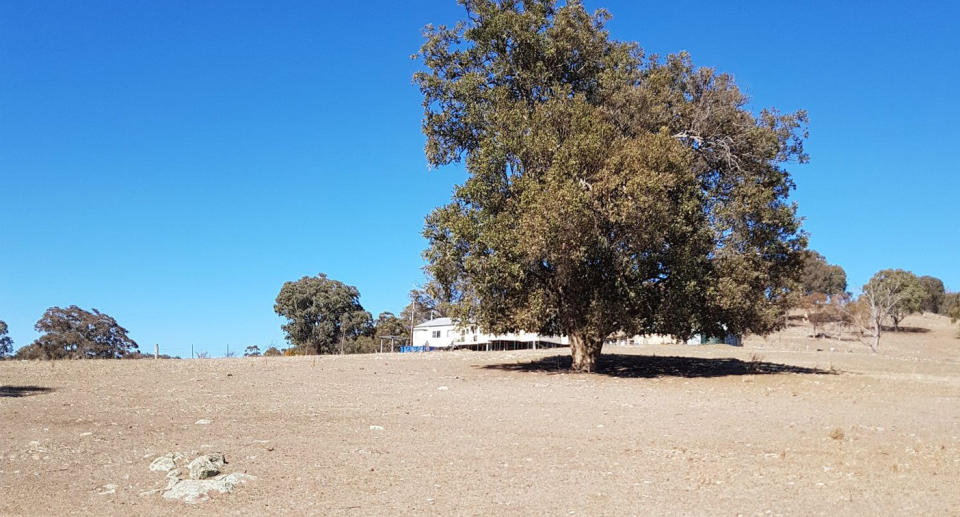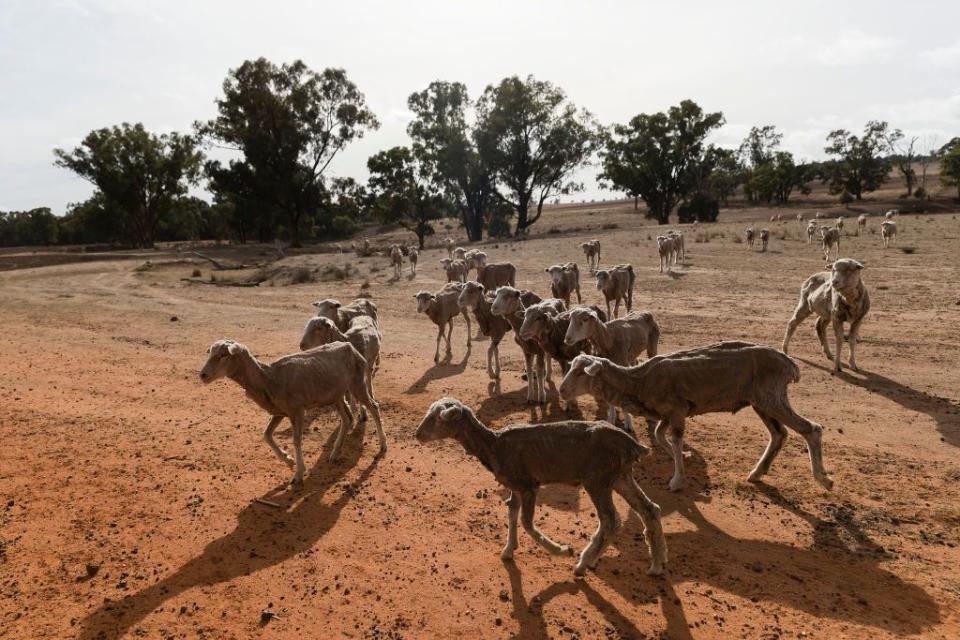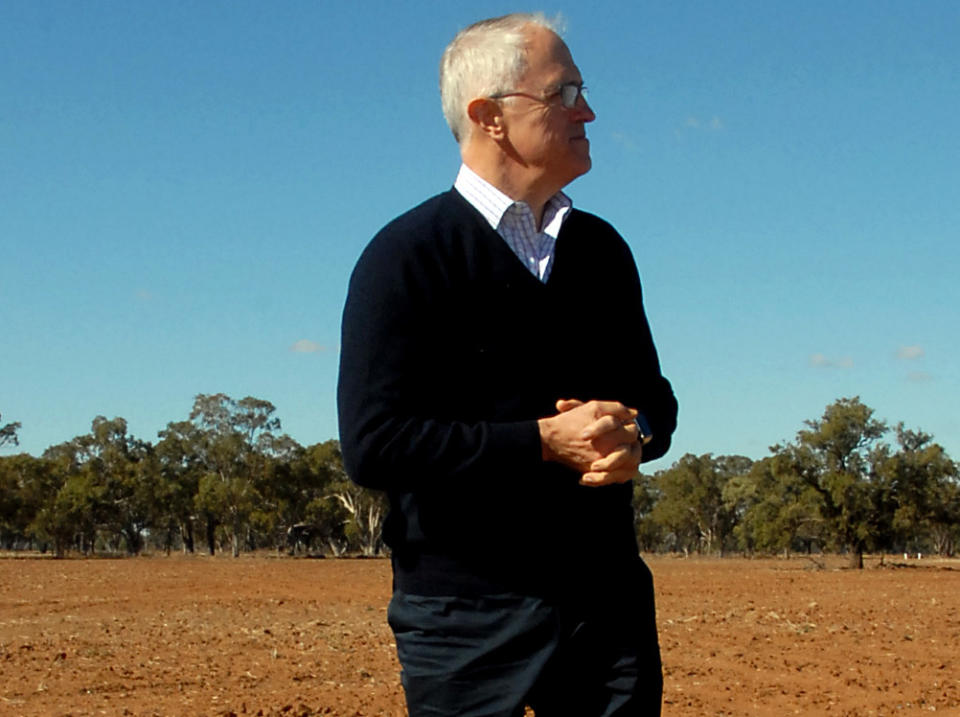Struggling farmer captures devastating reality of drought
A man’s before and after pictures of his drought-stricken land have revealed the devastating reality facing thousands of farmers across Queensland and NSW.
James Schulhin, owner of Watsons Creek’s Roseneath farm in NSW’s northeast, took to Facebook on Sunday to reveal the lasting damage months without rain has caused.
He shared an image from 2016 in which he labelled “the good old days” with lush grass and dozens of cows grazing in a field.
Just two years later and following one of Australia’s worst droughts of the last century, the same spot is unrecognisable.


Gone are the acres of thick green grass and in its place sits a dusty, dry field with no sign of cattle.
“The drought has hit us on so many levels – financial, emotional and health,” Mr Schulhin told Yahoo7 News.
“I lay awake most nights thinking how we are going to pay for everything.”
And there appears to be no respite for struggling farmers such as Mr Schulhin with no sign of rain in the near future.
“It could be a dry spring and tough summer,” Prime Minister Malcolm Turnbull said as he announced the federal government’s $190 million relief package on Sunday at a farm in central NSW.
“We hope the forecasts are proved wrong but the prospects are not great at the moment.”
One of Australia’s worst droughts in the last century
Autumn in 2018 was the fourth-warmest autumn on record, with rainfall totals below average for most of Australia.
Last month was also the driest July nationally since 2002.
In NSW, drought is affecting roughly 99 per cent of the state, with the Western, North West, Northern Tablelands, Hunter, Central West, Central Tablelands, Riverina and South East regions the hardest hit.
About 58 per cent of Queensland is in drought, with producer group AgForce saying parts of the state’s west and south have been drought-affected for more than six years.

Along with parts of NSW and Queensland, rainfall deficiencies deepened in July in northern Victoria, eastern pastoral and southern agricultural regions of SA and southern WA and its Gascoyne coast.
On top of the dry conditions, there is a 50 per cent chance of an El Nino weather event developing in spring, which is linked to below average rainfall in Australia’s southeast.
Government’s financial backing
Mr Turnbull described some farmers’ situations as “diabolical” and “tragic” as they battle bone-dry conditions.
However he reminded farmers that they’re not alone and the nation would do what it could to support them through this difficult time.
“You put the food on our tables, the fibre that goes on our backs and we have your back,” Mr Turnbull told reporters in Trangie.

Farmers will be able to access up to $12,000 in cash payments under the new relief package which also includes a boost for mental health services.
The government is also changing the assets test to allow an estimated 8000 more farmers to access support.
Desperate search for dad and three young kids camping in poor weather
Aussie student’s holiday nightmare as she’s detained in Bali
Queensland cabinet minister Kate Jones said Mr Turnbull’s announcement was a crucial one for those affected communities.
“I’m sure that these payments announced today will be welcomed by families,” Ms Jones told reporters.
“This is an example of the Malcolm Turnbull government finally listening to the needs of Australia.”
However some farmers have expressed concerns for the long-term futures of their farms, with the funding simply a short-term fix to put food on their family’s table.
With AAP


